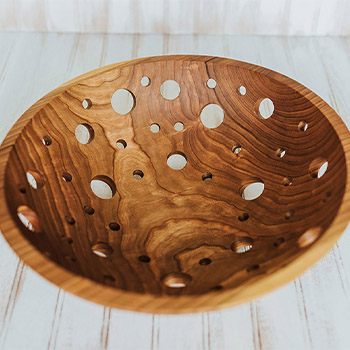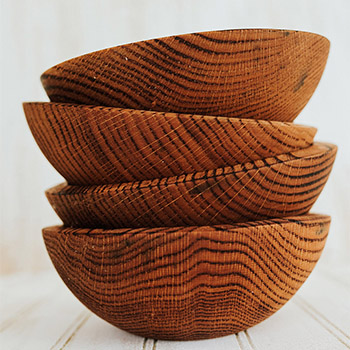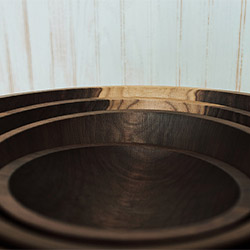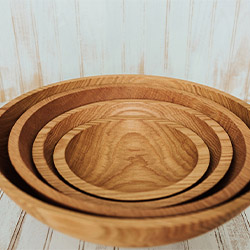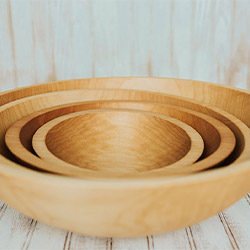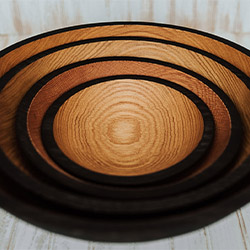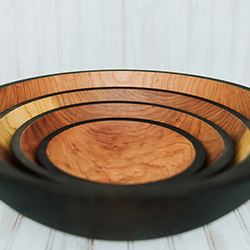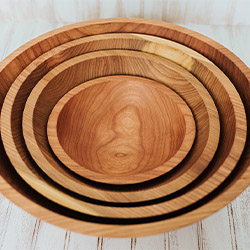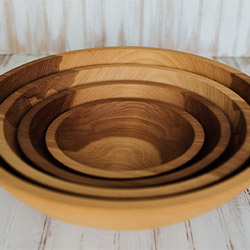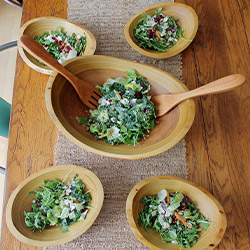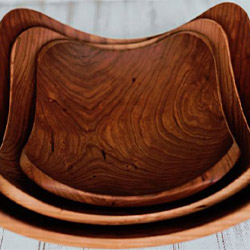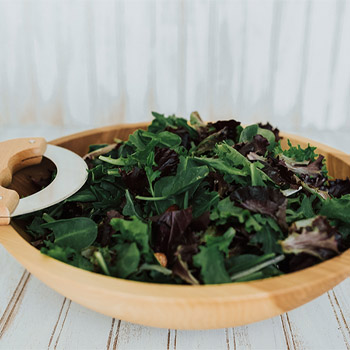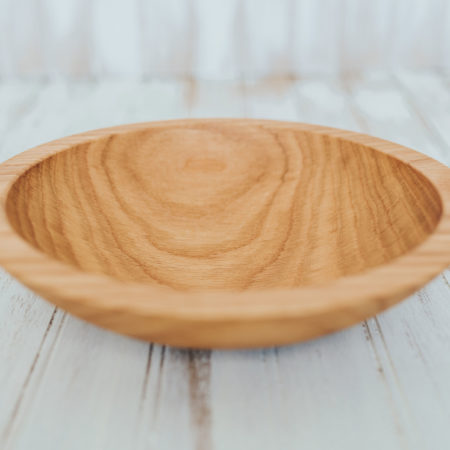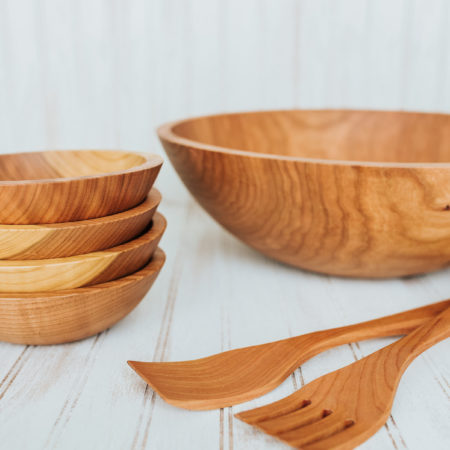Are you tired of constantly replacing your wood kitchenware? Looking for ways to extend its lifespan and save some money? Well, look no further!
In this comprehensive guide, we will walk you through the steps to maximize the longevity of your beloved wood kitchenware.
From choosing the right type of wood to applying food-safe finishes, we’ve got you covered.
So, if you’re ready to unlock the secrets to keeping your wood kitchenware in pristine condition, keep reading.
Key Takeaways
- Choose wood kitchenware that suits your needs and preferences, such as durable cutting boards and elegant serving platters.
- Clean wood kitchenware with a gentle soap and water solution, avoiding harsh chemicals, and ensure thorough drying to prevent damage.
- Properly store wood kitchenware in a dry environment, away from direct sunlight and water sources, and use protective covers or cloth bags to prevent scratches.
- Apply food-safe finishes to wood kitchenware to enhance appearance and provide a protective layer against bacteria and moisture.
Choosing the Right Wood Kitchenware
When selecting wood kitchenware, it’s important to consider your specific needs and preferences. Your kitchen is a place where you spend a significant amount of time, so it’s crucial to choose wood kitchenware that not only meets your practical requirements but also reflects your personal style and taste.
Firstly, think about the purpose of the wood kitchenware you need. Are you looking for cutting boards, utensils, or serving platters? Each item serves a different function, so consider what you use most frequently in your kitchen. If you enjoy cooking and chopping, a durable and spacious cutting board made of hardwood, such as maple or walnut, maybe the best choice. On the other hand, if you often entertain guests, elegant serving platters made from lighter wood, like bamboo or acacia, can add a touch of sophistication to your table.
In addition to function, think about the aesthetics of the wood kitchenware. Do you prefer a rustic, natural look or a more modern, sleek appearance? Wood kitchenware comes in various styles and finishes, so choose one that complements your kitchen decor. If you have a farmhouse-style kitchen, consider opting for wood kitchenware with a distressed finish or a traditional design. For a contemporary kitchen, sleek and minimalist wood kitchenware with a smooth finish can create a cohesive and stylish look.
Proper Cleaning Techniques
To ensure the longevity of your wood kitchenware, it’s important to follow proper cleaning techniques.
Use a gentle soap and water solution to clean your wooden utensils and cutting boards, avoiding harsh chemicals that can damage the wood.
After cleaning, make sure to dry them thoroughly to prevent any moisture from seeping in and causing warping or cracking.
Gentle Soap and Water
Using a gentle soap and water solution is the recommended method for properly cleaning wood kitchenware. This simple yet effective technique helps to remove dirt, grime, and food residue without damaging the wood’s natural beauty. To ensure you’re using the right cleaning products, refer to the table below for a list of gentle soaps that are safe for wood kitchenware:
| Soap Brand |
Ingredients |
Benefits |
| Castile Soap |
Olive oil, coconut oil, etc. |
Mild and non-toxic |
| Dish Soap |
Surfactants, water, etc. |
Removes grease effectively |
| Vegetable Glycerin Soap |
Glycerin, water, etc. |
Moisturizes wood |
To clean your wood kitchenware, simply mix a small amount of gentle soap with warm water. Gently scrub the surface with a soft sponge or cloth, ensuring you cover all areas. Rinse thoroughly and dry immediately to prevent water damage. By following these steps, you can keep your wood kitchenware looking beautiful and extend its lifespan.
Avoid Harsh Chemicals
For optimal preservation of your wood kitchenware, it’s important to refrain from using harsh chemicals and instead implement proper cleaning techniques. Harsh chemicals can damage the wooden surface, leading to cracks, discoloration, and a shorter lifespan for your beloved kitchenware.
Instead, opt for gentle and natural cleaning solutions that will effectively remove dirt and stains without causing harm. You can create your own cleaning solution by mixing warm water with a small amount of mild dish soap. Apply the solution to a soft cloth or sponge and gently wipe the surface of your wood kitchenware.
Remember to rinse thoroughly and dry immediately to prevent moisture from seeping into the wood. By avoiding harsh chemicals and using proper cleaning techniques, you can ensure that your wood kitchenware remains beautiful and functional for years to come.
Dry Thoroughly After Cleaning
Make sure to thoroughly dry your wood kitchenware after cleaning to prevent moisture damage and prolong its lifespan. Proper drying techniques are essential to maintain the quality and durability of your wooden utensils.
Here are four steps to ensure your wood kitchenware is dried properly:
- Use a clean towel or cloth: After washing your wood kitchenware, gently pat it dry with a clean towel or cloth. Avoid leaving any moisture on the surface, as it can lead to warping or cracking over time.
- Air dry in a well-ventilated area: Place your wood kitchenware in a well-ventilated area, allowing it to air dry naturally. This helps to prevent any lingering moisture from causing damage.
- Avoid direct sunlight or heat sources: While air drying, ensure your wood kitchenware isn’t exposed to direct sunlight or placed near heat sources, as this can dry the wood too quickly and result in cracks.
- Store in a dry place: Once fully dry, store your wood kitchenware in a dry place to protect it from any potential moisture in the environment.
Drying and Storing Guidelines
To ensure the longevity of your wood kitchenware, it’s important to follow proper drying and storing guidelines.
After washing your wooden utensils, it’s crucial to dry them thoroughly before putting them away. Excess moisture can seep into the wood and cause it to warp or crack over time. To dry your utensils, simply pat them dry with a clean towel and then leave them out in a well-ventilated area until completely dry. Avoid placing them near a heat source, as this can cause the wood to dry out too quickly and potentially damage it.
When it comes to storing your wood kitchenware, there are a few guidelines to keep in mind.
Firstly, always make sure your utensils are completely dry before storing them. Wet utensils can promote the growth of mold and bacteria, which not only affect the taste of your food but also compromise the integrity of the wood.
Secondly, avoid storing your wood kitchenware in direct sunlight or near a heat source. Exposure to extreme temperatures can cause the wood to expand or contract, leading to cracks or warping.
To keep your wood kitchenware in the best possible condition, consider storing them in a drawer or cabinet away from excessive heat, moisture, and sunlight. You can also use dividers or organizers to keep your utensils separate and prevent them from rubbing against each other, which can cause scratches or damage.
Additionally, periodically check for any signs of wear or damage and address them promptly to avoid further deterioration.
Preventing Moisture Damage
To prevent moisture damage to your wood kitchenware, it’s important to take a few steps.
First, make sure to dry them thoroughly after each use. Wipe off any excess water and allow them to air dry completely before storing them.
Second, store your wood kitchenware in a dry and well-ventilated area. This will help to avoid moisture buildup and potential damage.
Drying After Use
After using wood kitchenware, ensure its longevity by thoroughly drying it to prevent moisture damage. Here are four essential tips to help you protect your beloved wooden utensils and cutting boards:
- Wipe it down: After washing your wood kitchenware, use a clean towel to wipe off any excess water. This will help to remove moisture from the surface and prevent it from seeping into the wood.
- Air dry: Allow your wood kitchenware to air dry completely before storing it. This will ensure that any remaining moisture evaporates naturally, reducing the risk of mold or warping.
- Avoid direct heat: Never expose your wood kitchenware to direct heat sources such as stovetops or ovens. High temperatures can cause the wood to dry out and crack.
- Store in a dry place: Choose a well-ventilated area to store your wood kitchenware. Avoid storing it in damp or humid environments, as this can promote moisture absorption and lead to damage over time.
Proper Storage Techniques
Ensure the longevity of your wood kitchenware by implementing proper storage techniques that prevent moisture damage. Moisture is the enemy of wood, as it can cause warping, cracking, and even mold growth. By following these simple storage guidelines, you can protect your beloved kitchenware and ensure its durability for years to come.
| Storage Technique |
Description |
Benefits |
| Use a Dry Environment |
Store your wood kitchenware in a dry environment away from direct sunlight and water sources. Moisture and sunlight can damage the wood, leading to discoloration and weakening of the material. |
Prevents warping and cracking |
| Maintain Proper Airflow |
Allow for proper airflow around your wood kitchenware. This helps prevent the buildup of moisture and reduces the risk of mold growth. |
Preserves the integrity of the wood |
| Avoid Stacking |
Avoid stacking your wood kitchenware to prevent unnecessary pressure and potential damage. Stacking can lead to scratches, dents, and other forms of physical harm. |
Keeps your kitchenware in pristine condition |
| Use Protective Covers |
Consider using protective covers or cloth bags to shield your wood kitchenware from dust, dirt, and potential scratches. This extra layer of protection helps maintain the beauty and longevity of your kitchenware. |
Prevents surface damage and keeps your kitchenware looking brand new |
| Regularly Inspect |
Regularly inspect your wood kitchenware for any signs of moisture damage, such as discoloration, warping, or mold growth. If you notice any issues, take immediate action to prevent further damage and consult a professional if necessary. |
Allows for early detection and timely intervention, ensuring the continued use of your wood kitchenware |
Applying Food-Safe Finishes
For maximum durability and safety, it’s recommended to apply food-safe finishes to your wood kitchenware. These finishes not only enhance the appearance of your wooden utensils, cutting boards, and bowls but also provide a protective layer that prevents the absorption of harmful bacteria and moisture.
By following these steps, you can ensure that your wood kitchenware remains in top-notch condition for years to come:
- Choose the right finish: Look for finishes specifically labeled as food-safe, such as mineral oil, beeswax, or food-grade varnish. These finishes have been tested and approved for contact with food, ensuring that they won’t leach any harmful substances into your meals.
- Prepare the surface: Before applying the finish, make sure your wood kitchenware is clean and free from any debris. Sand the surface lightly to remove any rough patches or imperfections, ensuring a smooth and even finish.
- Apply the finish: Using a clean cloth or brush, apply a liberal amount of the chosen food-safe finish to the wood. Ensure that you cover all surfaces, including the edges and corners. Allow the finish to penetrate the wood for the recommended time, usually around 15-20 minutes.
- Wipe off excess: After the recommended time, wipe off any excess finish using a clean cloth. This step helps remove any buildup and prevents a sticky or greasy residue on the wood surface.
Avoiding Heat and Sun Exposure
To protect your wood kitchenware from damage, it is important to take precautions to avoid exposing it to heat and direct sunlight. Excessive heat can cause the wood to warp or crack, while direct sunlight can fade and discolor the surface. By following a few simple steps, you can ensure that your wood kitchenware remains in pristine condition for years to come.
First and foremost, avoid placing your wood kitchenware near sources of heat such as stovetops, ovens, or hot pans. The intense heat can cause the wood to dry out and lose its natural moisture, leading to cracks and splits. Instead, find a cool and dry place to store your wooden utensils, cutting boards, and bowls.
In addition to heat, direct sunlight can also wreak havoc on your wood kitchenware. The UV rays can fade the natural color of the wood and cause it to become dull and lifeless. To prevent this, keep your wooden items away from windows or any areas where they will be exposed to direct sunlight for prolonged periods. If you have no other choice, consider using curtains or blinds to block out the sunlight.
To help you visualize the impact of heat and sunlight on wood kitchenware, take a look at the table below:
|
Heat Exposure |
Sun Exposure |
| Damage |
Warping, cracking |
Fading, discoloration |
| Prevention |
Store away from heat sources |
Keep away from direct sunlight |
Regular Maintenance Tips
To keep your wood kitchenware in optimal condition, it’s important to regularly maintain it and follow a few simple tips. Here are four maintenance tips that will help you prolong the lifespan of your beloved wood kitchenware:
- Clean it gently: After each use, hand wash your wood kitchenware with warm, soapy water. Avoid using harsh abrasive cleaners or soaking it for long periods of time. Instead, use a soft sponge or cloth to gently scrub away any food residue. Rinse thoroughly and pat dry with a clean towel.
- Oil it regularly: Wood kitchenware needs to be oiled to maintain its moisture and prevent it from drying out or cracking. Apply a food-grade mineral oil or beeswax regularly to nourish the wood. Simply dab a small amount onto a clean cloth and rub it into the surface of your kitchenware. Let it absorb for a few hours or overnight before wiping off any excess oil.
- Avoid extreme temperatures: Wood is sensitive to temperature changes, so it’s important to protect your kitchenware from extreme heat or cold. Avoid placing it near direct heat sources like stovetops or ovens, and never put it in the dishwasher or microwave. Also, avoid leaving it in direct sunlight for extended periods, as this can cause the wood to fade or warp.
- Store it properly: When not in use, store your wood kitchenware in a cool, dry place away from excessive moisture. Avoid stacking it tightly or crowding it with other items, as this can lead to scratches or dents. Instead, place a soft cloth between each piece to protect them from rubbing against each other.
Reviving and Restoring Wood Kitchenware
Restoring the natural beauty of your wood kitchenware is a simple process that can be done with a few easy steps. Whether you have a cherished cutting board or a beloved wooden spoon, reviving and restoring them won’t only add to their lifespan but also enhance the warmth and character they bring to your kitchen.
First, start by cleaning the wood kitchenware thoroughly. Use a mild dish soap and warm water to gently scrub away any dirt or stains. Avoid harsh chemicals that can damage the wood’s natural finish. Once clean, rinse it well and pat dry with a clean towel.
Next, apply a food-safe oil or wax to nourish the wood. This step helps to restore moisture and prevent cracking or drying out. Simply apply a thin, even coat of oil or wax using a clean cloth or brush. Be sure to follow the manufacturer’s instructions and allow sufficient drying time.
After applying the oil or wax, buff the wood kitchenware gently with a soft cloth to remove any excess. This will leave a smooth and polished finish, bringing out the natural beauty of the wood.
To maintain the restored look and extend the lifespan of your wood kitchenware, consider using a cutting board conditioner or wood butter regularly. These products contain natural oils that help to protect the wood and prevent it from absorbing moisture or odors.
Review
So there you have it, a comprehensive guide to maximizing the lifespan of your wood kitchenware. By following these simple tips, you can ensure that your wooden utensils and cutting boards last for years to come.
Did you know that properly drying and storing your wood kitchenware can increase its lifespan by up to 50%? Taking the time to care for your wooden kitchenware won’t only save you money in the long run but also help you enjoy the natural beauty and functionality of these timeless pieces.

